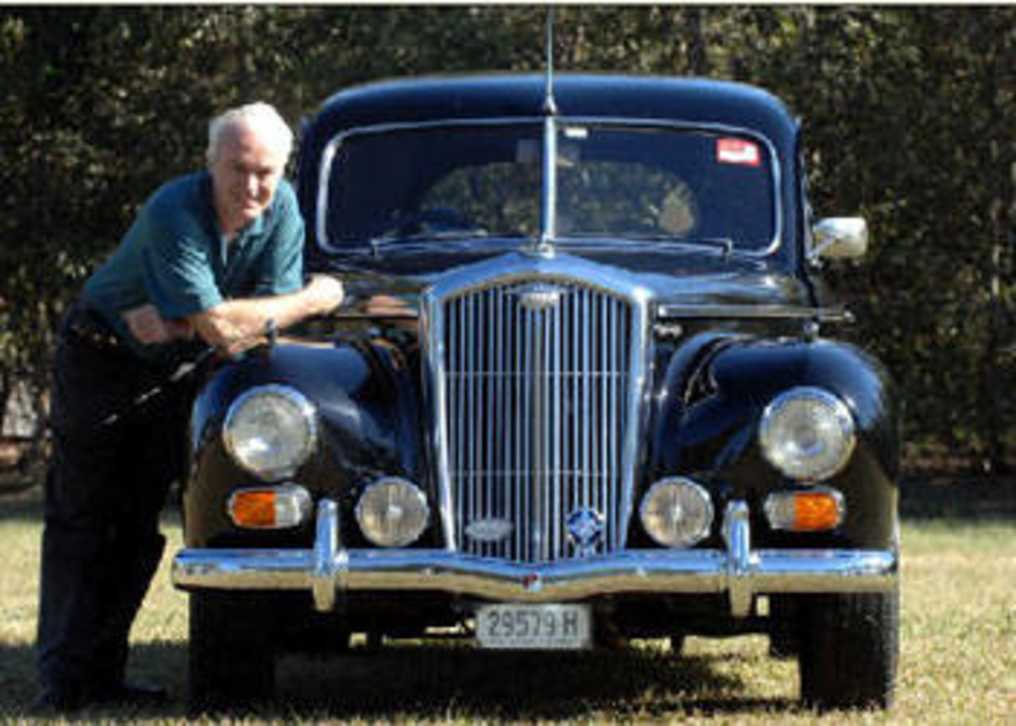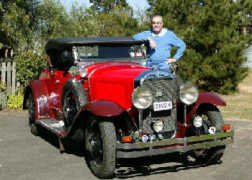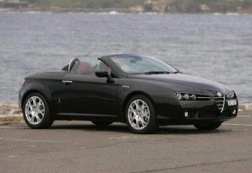“It's hard to explain, but just the whole way you drive it, it's really good,” Mortimer says. “It's a beautiful car to keep on the road.”
The Wolseley fan's first experience with the classic was when his good friend bought the car in the late 1980s. From that day on, he knew it was one he had to have.
“When I got home from driving it, I said to him 'I want first option on this',” he says. “And 20 years later he told me he was going to sell the car. So my son and I now own it.”
And even though it was 20 years later, Mortimer's son Brett had a similar reaction the first time he buckled up in the driver's seat.
“The first time my son drove one was going up to Queensland in 2005,” he says. “He looked at me after he'd been driving for an hour and said, 'Boy, this is different to drive, it's like nothing I've ever driven before'.”
Although his friend didn't want to sell the car, Mortimer says he couldn't see himself finding the time or money to restore it. But it seems he could rest assured it was going to a good home.
As it had been off the road for eight years it needed some work done on it.
“We didn't do a full restoration, just a facelift,” Mortimer says. “We resprayed it, recovered the seats made it more user friendly, put blinkers on it; things like that to keep on the road.”
The classic that still has a flip-out indicator on the B-pillar.
Since buying the car three years ago, the Mortimers have taken it on long runs to Queensland, Canberra and Gloucester.
“It's beautiful to drive,” Mortimer says. “It's fantastic on long distance runs, you get it on the highway and it's a limousine ride.”
But it isn't quite as enjoyable on city roads, with heavy steering, its weight and drum brakes making it a little out of place in the busy traffic.
“With 5 1/2 tonnes to lock, you're constantly turning the wheel, it is a bit heavy for it,” he says.
And it's not only the way it acts on the road that has these two car fans impressed.
“The styling, the look of it, especially the front end,” Mortimer says. “It has a very square front, a side opening bonnet and the big Wolseley grill.”
The 680 gets a good work out by its owners, although Mortimer says he's more likely to use his other Wolseley, a 15/60, for city drives, and this one for the longer cruises.
Mortimer says the engine in this car is unusual in that it was the basis of the design used in World War I for aircraft.
“Wolseley made engines for aircraft,” Mortimer says. “They took the design of that aircraft engine and modified it, they changed it to suit a car engine.”
And law enforcement agencies also took a liking to this stunner.
“This type of car was used by metro police in London and some of the big cities in the 1950s in England as a police car,” he says.
This year marks the 60th anniversary of the 680 and to celebrate the Wolseley Club of NSW will put on a big display at The Kings School in Parramatta on August 17.
The Wolseley 680 was made between 1948 and 1954. They shared the longer wheelbase with the Morris Six and also shared the same motor.
“The Morris Six was basically the same car but was like the cheaper version,” Mortimer says.
“They used to say Wolseley was the professional man's car and the Morris was for the blue-collar workers.”
In particular, the grille and driving lights made it appear classier and the interior was also a classy standout with woodgrain, leather seats and even a heater.
In total, 25,000 were built over the model's lifespan. About 5000 were shipped to Australia, some in complete knockdown condition.
Mortimer knows of 12 models that attended a national rally last year, and says there would be at least another six that aren't roadworthy.
When Mortimer bought his first Wolseley, the 15/60, his wife wouldn't even acknowledge it was theirs, instead making him park it at the side of the house. But, he says with a laugh, she has changed her tune over the years.
Snapshot
1951 Wolseley 680
Price when new: pound stg. 975 (about $2000)
Value now: about $10,000
Verdict: The upmarket version of the Morris Six, the Wolseley is at home while cruising.




-2.jpg)


.jpg)

.jpg)
.jpg)




.jpg)
.jpg)







.jpg)
.jpg)
.jpg)
Comments